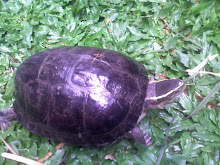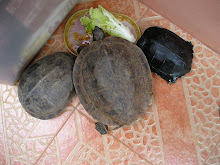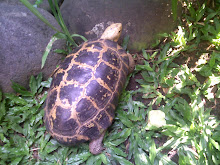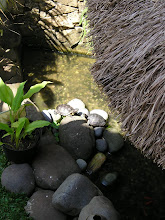Submitted By: Joel Stephens
Believe it or not, a well-constructed pond should take less maintenance than a lawn that is aerated, fertilized & mowed with any semblance of consistency. Why? Because the whole idea behind creating a great pond is the formation of an independent ecosystem...a self-sustaining habitat for both flora & fauna. If the groundwork is properly laid, there are only a few things to worry about to ensure that your koi or goldfish never go "Belly Up". Stick to these basic points of pond maintenance, and you should be able to enjoy your new ecosystem for many years to come.
One of the most important things you should concern yourself with is the water level.
Evaporation is a natural aspect of any ecosystem, and it must be monitored weekly. Unlike a sea or lake of any kind of volume, your pond does not have the ability to hold as much water during the rainy seasons as it will lose during the dry seasons. Check the levels often & fill as needed to ensure a fresh infusing of water for the health and safety of all plant & animal life in your habitat. If your level has not dropped 10% in 3 weeks, pump some of your water out and add fresh water in. Be sure to add a dechlorinator to offset the amount chlorine that is in the new water. Follow the instructions of the specific product's packaging for optimal performance.
Next, check your pond for decaying plants and other debris that could "break down" at the bottom of your pond. This "break down" can release toxins that will harm, and even kill, your fish over time. Besides being unhealthy for your water features ecosystem, no one wants to gather around a pond that is full of rotting plants and algae all summer long. Take a few minutes and remove any thing that you find from the bottom of your pond at least every 2 weeks.
Finally, check your ponds filtering system every 5 weeks for clogs or other obstructions that would inhibit the proper flow of water. Remember, your filter should be running 24/7 with no interruptions, turning over the total water volume in about 2 hours. If it stops for even a few hours, it could lose a huge amount of its beneficial bacteria. To gain this back could take upwards of 4 weeks depending on what was lost! You will need to clean your filter as often as necessary to ensure a healthy ecosystem for your pond. The frequency will vary greatly depending on what type of filter you are using, and how large your pond is. Some mechanical filters will need to be cleaned monthly while a good biomechanical (mat based) filter may only need to be cleaned 2-3 times per year! The best way to know is to always check your water clarity! The less clear, the less filtration!
With a little bit of maintenance, a pond can become a wonderfully relaxing place for the entire family to enjoy. Follow these simple rules, with a little bit of consistency, and your pond will give you nothing but pleasure for many years to come.
Published At: Isnare Free Articles Directory http://www.isnare.comPermanent Link: http://www.isnare.com/?aid=245078&ca=Gardening
About Joel Stephens
After being a student of the University of Oregon's Architecture & Allied Arts program, Joel Stephens began a 10-year journey in furniture design & manufacturing. As well as being an ASID Industry Partner for lines he created, Joel established Peniel Products, an online retailer of Home Furnishings and Decor.
Source: www.Isnare.com
Thursday, 20 August 2009
Subscribe to:
Post Comments (Atom)
































.jpg)

+085.jpg)





.jpg)
No comments:
Post a Comment